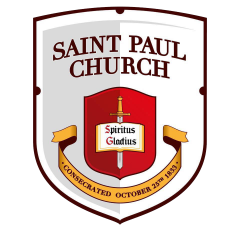
Luke the Evangelist (Latin: Lūcās, Ancient Greek: Λουκᾶς, Loukãs, Hebrew: לוקאס, Lūqās, Aramaic: לוקא, Lūqā’) is one of the Four Evangelists—the four traditionally ascribed authors of the canonical Gospels. The early church fathers ascribed to him authorship of both the Gospel according to Luke and the book of Acts of the Apostles, which would mean Luke contributed over a quarter of the text of the New Testament, more than any other author. Prominent figures in early Christianity such as Jerome and Eusebius later reaffirmed his authorship, although the fragile evidence of the identity of the author of the works has led to discussion in scholarly circles, both secular and religious.
The New Testament mentions Luke briefly a few times, and the Pauline epistle to the Colossians refers to him as a physician (from Greek for ‘one who heals’); thus he is thought to have been both a physician and a disciple of Paul. Christians since the faith’s early years have regarded him as a saint. He is believed to have been a martyr, reportedly as having been hanged from an olive tree, though some believe otherwise.
The Roman Catholic Church and other major denominations venerate him as Saint Luke the Evangelist and as a patron saint of artists, physicians, bachelors, surgeons, students and butchers; his feast day takes place on 18 October.


